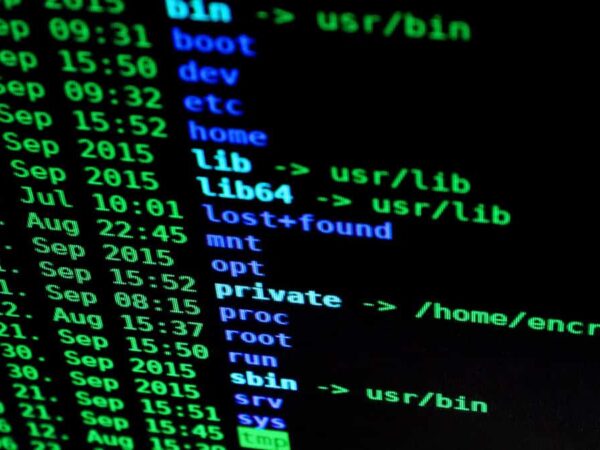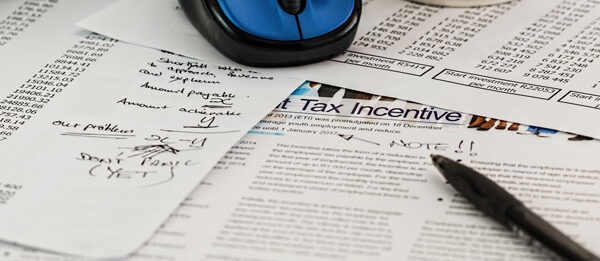Managing Small Business Cash on Hand During Emergencies
Sarah Wen of TrustPlus shares best practices to manage small business cash on hand during emergencies, especially COVID-19.

Financial coaches Sarah Wen and Chris Starr of TrustPlus share best practices to help you manage your small business cash on hand during emergencies. As sales have plummeted and many business owners struggle to stay afloat, it’s important not to lose hope and instead formulate a solid, strategic plan to help your business survive well beyond the COVID-19 economic shutdown. Your small business cash-on-hand emergency strategy must include assessing both expenses and income before making your small business emergency plan.
Assess Expenses
Wen says that in order to get a complete picture of how long your small business’s cash on hand might last, it’s important to understand where your money is currently going in terms of expenses.
Prioritize Expenses: Try to think two to three months ahead, especially if you’ve lost income or expect to lose income within that timeframe. Evaluate all upcoming fixed expenses on the basis of:
- Flexibility: Is there a grace period? Is there lender leniency? Is negotiation possible?
- Liquidity: Does it require a cash payment or can it go on an available credit card?
- Necessity: evaluate non-essential subscription services and consider whether to freeze or cancel.
Ask yourself, where can expenses be trimmed? Where have expenses increased? What barriers might exist to trimming expenses, and can these barriers be removed?
When deciding how to spend cash, Wen recommends prioritizing food and medical care expenses first; followed by housing, utilities, communications; and then debts and other responsibilities last.
Reduce Payments and Expenses
Wen advises small business owners to check for programs that allow you to reduce payments or to buy goods at a reduced cost.
Wen says it’s important to understand whether you qualify for food assistance, for example via the Supplemental Nutrition Assistance Program (SNAP). You can also check local food banks or other local programs. Find out from your landlord or mortgage company if you might be able to defer or lower rent or mortgage payments on your business or home.
When deciding which expenses you can reasonably reduce, Wen encourages you to consider internet and cell service a part of necessary utilities. Ask your cell phone provider if they can reduce your monthly bill. Wen says to use the website FindHelp.org, where you can find a wide variety of assistance, including food assistance, help paying bills, reducing utility bills, and other free or reduced-cost programs.
Obtain Hardship Accommodations on Select Debts
Most credit companies and other debtors are allowing for payment skip, reduced monthly payments, or other considerations due to the ongoing crisis.
Wen recommends checking with your credit card and lending companies to find out what relief assistance they are offering. Wen says to keep track of details of your requests, such as the dates and names of the reps you speak with in case you face resistance when asking for hardship help, and ask to be transferred to the proper department for hardship assistance. Also, Bankrate.com has a large list of banks offering help to customers impacted by the Coronavirus, with detailed information about how to navigate each one.
Wen notes federal student loans are suspended without further action.
Assess Income
As you plan strategically for keeping your small business open and managing cash on hand, it’s important to evaluate your assets so you know what you have to work with, and what you need to protect and maintain. Tally up all income from yourself and other household contributors to determine how much money is coming in presently, the prognosis for the next few pay cycles, and the long-term projection.
In terms of savings, what upcoming needs and contingencies might be relying on your savings fund? Are you in a position to add to your savings fund right now?
Wen says to determine how much available credit you have. While adding debt is a last resort, it should be taken when weighed against food and housing needs.
Economic Impact Payments (EIP)
The federal government approved EIP, which you should already have received this spring. The EIP is based on tax return information you filed and will be either automatically deposited or otherwise paid out, depending on the information you provided to the IRS on your 2018 or 2019 tax return. Most adults received $1,200 each, although some would get less depending on their financial standing. For every qualifying child age 16 or under, the payment is an additional $500.
You should take action to get your EIP if you were not required to file for an allowable reason, e.g. you are a social security recipient, but if you have dependents, you will want to file in order to receive EIP funds on behalf of those dependents.
Small Business Administration (SBA) Options
The SBA is providing a financial reprieve to small businesses during the COVID-19 shutdown. You can apply through any 7(a) SBA lender for a PPP loan or an Economic Injury Disaster Loan. Read on for details of each.
Paycheck Protection Program (PPP) loan
The SBA PPP loan is designed to provide a direct incentive for small businesses to keep their workers on the payroll. The SBA will forgive loans if employees are kept on the payroll for eight weeks and the money is used for payroll, rent, mortgage interest, or utilities.
SBA Economic Injury Disaster Loan
The SBA Economic Injury Disaster Loan (EIDL) provides vital economic support to small businesses to help overcome the temporary loss of revenue they are experiencing as a result of the COVID-19 economic shutdown. This program is for any small business with less than 500 employees, including sole proprietorships, independent contractors, and self-employed persons; private non-profits, and 501(c)(19) veterans organizations affected by the shutdown. A loan advance will be made within days of the application, and the loan advance will not have to be repaid.
SBA Express Bridge Loan
The SBA Express Bridge Loan (EBL) allows small businesses that currently have a business relationship with an SBA Express Lender to access up to $25,000 quickly. The EBL can be a term loan or used to bridge the gap while applying for a direct EIDL. If a small business has an urgent need for cash while waiting for a decision and disbursement on an EIDL, they may qualify for an EBL. An EBL is for up to $25,000, has a fast turnaround, and needs to be paid in full or in part by proceeds from the EIDL.
SBA Debt Relief Efforts
As part of SBA’s debt relief efforts, the SBA will automatically pay the principal, interest, and fees of the current 7(a), 504, and microloans for a period of six months. The SBA will also automatically pay principal, interest, and fees of new 7(a), 504, and microloans issued prior to September 27, 2020.
File for Unemployment Benefits
If you are a self-employed worker or do not qualify for regular state unemployment insurance, you may now be eligible for federal Pandemic Unemployment Assistance. Each state sets its own unemployment insurance benefits eligibility guidelines, but you usually quality if you:
- Are unemployed through no fault of your own. In most states, this means you have to have separated from your last job due to a lack of available work.
- You must meet your state’s requirements or fall into one of the categories of the Pandemic Unemployment Act.
- Meet any additional state requirements.
- If you are a self-employed worker or do not qualify for regular state unemployment insurance, you may now be eligible for federal Pandemic Unemployment Assistance.
Wen says to do as much research as you can online before calling for assistance since call volume is extremely high. The maximum timeframe to receive payments is for a period of 39 weeks, and you may receive assistance retroactively. In addition to typical benefits, Pandemic Unemployment Assistance gets you an extra $600 per week max. Typical benefits vary by state, ranging from $275 (LA) to $750 (NJ). With an additional $600, you’re looking at a maximum of $875 to $1350 per week. Most will not receive the maximum benefit.
Personalize Your Ongoing Financial Strategy
Wen says it’s important to revisit these exercises as time goes on, continuing to track expenses and budget. Stay on top of things and apply as new benefits are offered. Wen says it’s important to document all financial changes and concessions made in regards to the shutdown and keep paper trails and receipts for all alternative arrangements. We don’t know how long the economic impact of the shutdown might linger; so Wen says how risk-averse you are will help to shape and personalize your strategy as you make a financial plan, and manage your small business’s cash on hand to successfully keep your business afloat.









